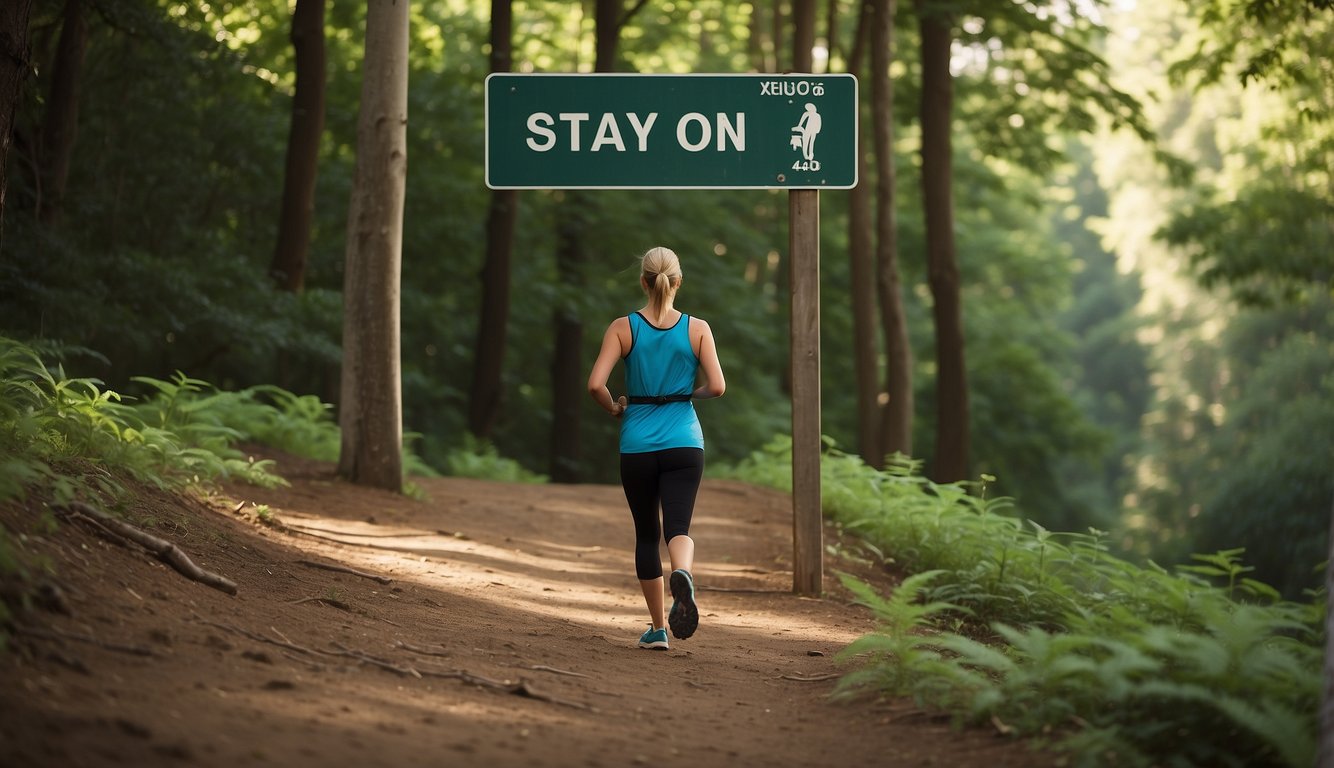As a runner, I have always appreciated the beauty of nature and the trails that allow me to explore it. However, I have also become aware of the impact that my presence can have on the environment. It is important for us runners to promote trail conservation in order to preserve the natural landscapes that we love to explore.

Trail conservation involves taking steps to minimize our impact on the environment while running. This can include staying on designated trails, avoiding areas that are closed for environmental reasons, and properly disposing of waste. By taking these simple steps, we can help to ensure that the trails remain accessible and enjoyable for future generations of runners and hikers.
As runners, we have a unique opportunity to promote environmental awareness and conservation. By setting an example for others and actively participating in conservation efforts, we can help to protect the natural beauty that we love to explore. So, let’s lace up our shoes and hit the trails with a renewed commitment to promoting trail conservation.
Understanding Trail Conservation
As a runner, I believe it is important to understand the basics of trail conservation. By taking care of our trails, we can ensure that they remain accessible and enjoyable for future generations. In this section, I will discuss the importance of protecting public lands, erosion and biodiversity as trail health indicators, and the impact of climate change on trail sustainability.
The Importance of Protecting Public Lands
Public lands are a valuable resource for all of us. They provide us with opportunities for recreation, wildlife habitat, and clean air and water. It is important to protect these lands from development and other threats, so that they can continue to provide these benefits for years to come.
One way that we can help protect public lands is by staying on designated trails. By avoiding off-trail travel, we can minimize our impact on the surrounding environment and help prevent erosion and other damage to the trail system.
Erosion and Biodiversity: Trail Health Indicators
Erosion and biodiversity are important indicators of trail health. Erosion can damage trails and make them unsafe for use, while a loss of biodiversity can have negative impacts on the surrounding ecosystem.
To help prevent erosion, we can avoid using trails when they are wet or muddy, as this can increase the likelihood of damage. We can also follow Leave No Trace principles, such as packing out our trash and avoiding campfires in areas where they are not allowed.
To promote biodiversity, we can support conservation efforts and help protect sensitive habitats. This can include avoiding off-trail travel and staying on designated trails, as well as reporting any signs of damage or disturbance that we may encounter.
Climate Change and Trail Sustainability
Climate change is a growing concern for trail sustainability. As temperatures rise and weather patterns become more erratic, our trails may be at risk of damage from increased flooding, landslides, and other natural disasters.
To help mitigate these risks, we can support efforts to reduce greenhouse gas emissions and promote sustainable practices. This can include using public transportation or carpooling to trailheads, as well as reducing our overall carbon footprint through energy-efficient practices and lifestyle choices.
In conclusion, understanding trail conservation is an important part of being a responsible runner. By taking care of our trails and supporting conservation efforts, we can help ensure that these valuable resources remain accessible and enjoyable for generations to come.
Active Participation in Conservation Efforts
As a trail runner, I understand the importance of protecting our natural environment and preserving our public lands. Here are some practices I follow to minimize my environmental impact and support conservation efforts.
Practices for Minimizing Environmental Impact
I always make sure to follow Leave No Trace principles when I’m out on the trails. This means packing out any trash I generate, staying on designated trails, and avoiding disturbing wildlife and vegetation. I also try to reduce my carbon footprint by carpooling or using public transportation to get to trailheads.
Another way I minimize my environmental impact is by using sustainable practices in my everyday life. This includes recycling and composting as much as possible, using reusable water bottles and food containers, and buying products made from environmentally-friendly materials.
Community Involvement and Diversity in Trail Running
I believe that trail running should be an inclusive and welcoming community for everyone. I support efforts to increase diversity and inclusion in trail running, including supporting organizations like Runners for Public Lands that are committed to protecting public lands and promoting inclusive running communities.
I also try to participate in community events and group runs that support conservation efforts. This not only helps me stay connected with other trail runners, but also allows me to give back to the trails and public lands that I love.
Supporting Organizations and Brands Committed to Conservation
Finally, I try to support organizations and brands that are committed to conservation and sustainability. For example, I choose to buy products from companies like Patagonia that prioritize environmental stewardship and social responsibility.
I also support organizations like Runners for Public Lands that are dedicated to protecting public lands and promoting conservation efforts. By supporting these organizations and brands, I can help ensure that our trails and public lands are protected for future generations to enjoy.

